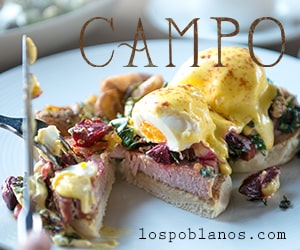Mole falls into that special class of substance–dark, rich, potent–that includes chocolate, red wine, coffee, tobacco and beer– not for kids or apple-cheeked ingenues. Mole is an adult food.
If you’ve had a good mole, you know that the layers can be dizzying–evoking smoke, fire and earth with a twinge of sweetness. Reminiscent of colonial-era meat sauce decadence, mole is fantastically mestizaje–a blend of African, European and Mesoamerican ingredients. Origin’s stories abound, but all of them start in Mexico.
In this month’s edition, Lance McHazlett, chile-phile and restaurant/pastry chef in a former life, shares his version of this mature dish, perfect for December and big feasts with friends.
It’s easy to mistake Lance for a native Burqueno, what with his easy-going panache for posole, chile sauce and red chile pecan pie. But what he is, is simply a man who embraces his surrounding food culture as if it were a brother from another mother. Originally from the orchard-studded land of western Colorado, where his father kept bees, Lance moved here thirteen years ago.
Before Albuquerque, he was toying with going into ethnobotany, led by a keen interest in geography-based differences in food culture, but he reconsidered in Tucson, Arizona, decided cooking was more his speed and proceeded to stage (train as a chef’s apprentice) at Tucson’s Presidio Grill. This was followed by a cream-filled streak as a pastry chef at the Westward Look and Ventana Canyon. After nearly a decade in commercial kitchens, he finally settled in Albuquerque.
Loves: Old cookbooks, out of print. He’s currently reading one on foraging in the Southwest, which, he points out is technically illegal on public lands (Wha?? I’m plugging my ears). As far as food goes, Lance is knee deep–distilling his own spirits, and fermenting his own kombucha vinegar which he then uses for pickles, mustards, and, yes, as a cleaning agent. All this after a long day’s work at La Montanita Co-op’s deli in Nob Hill.
On Local Food Cultures: “Western Colorado didn’t have any food culture to speak of,” says Lance. It was settled by Germans but “you don’t feel it or taste it in the food there…there’s no regional cuisine. It’s kind of sad.” Tucson, on the other hand, has the Sonoran thing going on. “Instead of the New Mexico green as the spine of chile culture, there you have the pasilla. It’s all about the poblano. Here the question is “green or red?” There it’s ‘green, red or white.’” They do a white sauce of garlic and onion and subtle jalapeno, hence the “white chili.” Which leads us to:
Chili Peppers: Lance is dead serious about chili. Case in point—his mole always includes four to seven different varieties. As far as New Mexican peppers go, Lance likes the red from the north (Chimayo) and green from the south. He remembers a really good batch of amarillo peppers he got from a guy on the Rio Grande. “I love chile. It doesn’t need to be hot, just needs to have flavor.” As a side note, one pepper he doesn’t carry a torch for is chipotle (roasted jalapeno). He was there in the beginning of the chipotle craze some 20 years ago and says, “I had plenty of chipotle. The flavor doesn’t do it for me…there are more amazing flavors out there.”
On Cold-Weather Cooking: Lance calls himself a true seasonal eater. He loves the warming and homey dishes that counterbalance the drop in temperature. “Winter is when the red chile, sweet potatoes and pumpkins come out…I love how you season food in the fall. People aren’t as afraid to use cinnamon, which is a real warming spice. I appreciate that.”
Favorite places to eat in Albuquerque: “I love Banh Mi Coda, I’m a sucker for a good head cheese” (Lance orders the Vietnamese-style ham banh mi). He also goes to Amerasia Café to get his fix of wood ear mushroom and tofu dim sum: “I just like the idea of dim sum. It means literally ‘touch the heart.'”
On the Fork: Turkey Mole “Mole” is more of an umbrella term in Mexico where it includes green, black and yellow sauces. Lance’s version is the dark reddish-brown, chocolate-laced mole poblano with which we’re familiar. Though mole poblano often incorporates upwards of 20 ingredients, this one contains ten.
You start by grinding your toasted ingredients together with some added water and oil to make the mole paste–this is the base of your sauce which you can then stew with broth and meat (if you’re into that) on the stovetop.
The basic components are dried chiles (choose your own adventure: ancho, Anaheim, pasilla, padron, arbol); nuts and sesame seeds (peanuts and sesame seeds: throw in a mixture of white and black for more complexity of flavor); dark chocolate (if you want a sweeter mole choose a sweeter bar), and toasted crackers as a thickener. Experimenting with other ingredients is part of the thrill of mole crafting–you can also use charred pecan shells for a charcoaly, smoked hickory flavor; dried fruits; bananas; different nuts and seeds; tomatillos; espresso (to enhance the psychotropic effect of your mole even more); cinnamon; garlic; onion and other thickening agents like baguettes or tortillas…the list goes on.
This particular version is attractive for its stunning depth of flavor without the drama of a bazillion ingredients. Lance and I made a batch and I’ve been eating it for virtually every meal and then some…warmed on rice for breakfast, lunch and dinner, cold on crackers for a late night snack.
At home Lance simmers his mole on his woodburning stove overnight or gets it going in the morning before he leaves for work. He tries to keep the paste on-hand all winter and recommends canning over freezing.
Though it seems like a great feat to conjure up a deep and dreamy mole, Lance is modest. “I tell people I don’t know how to cook. It’s not magic, cooking. I’m just taking ingredients that are magical and amazing to begin with. It’s just doing it.”
[amd-zlrecipe-recipe:150]
Edible celebrates New Mexico's food culture, season by season. We believe that knowing where our food comes from is a powerful thing. With our high-quality, aesthetically pleasing and informative publication, we inspire readers to support and celebrate the growers, producers, chefs, beverage and food artisans, and other food professionals in our community.





















